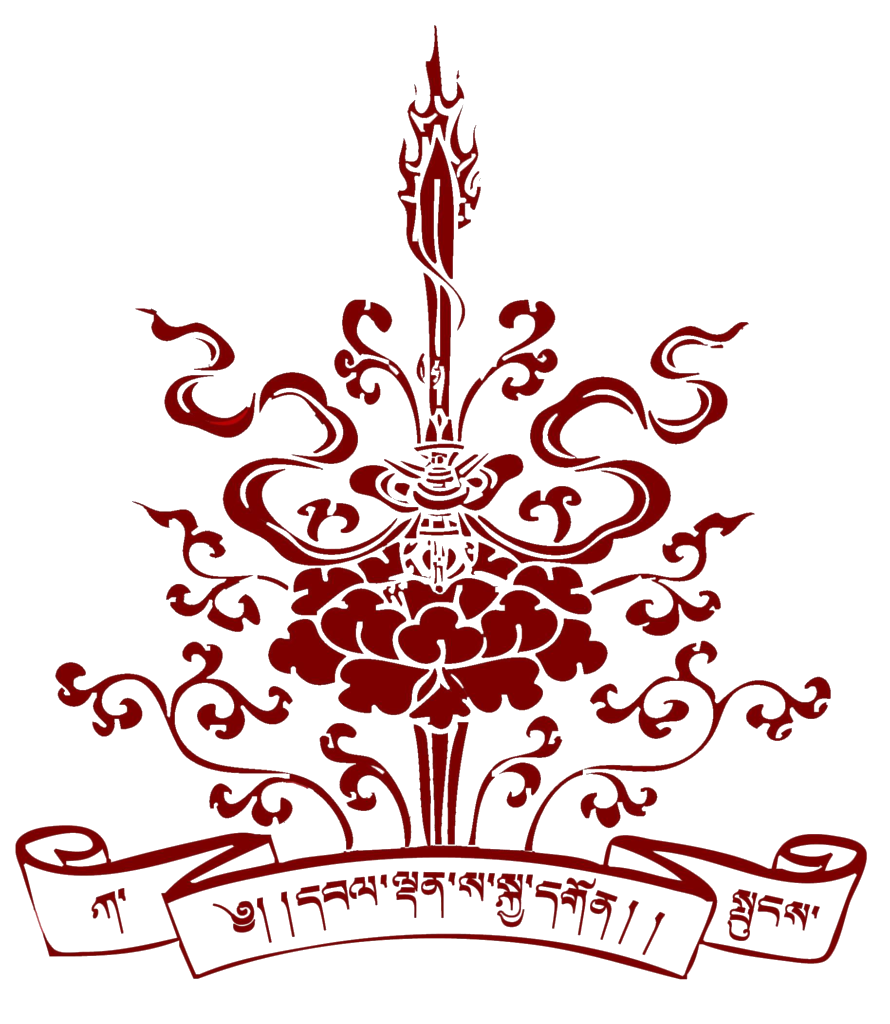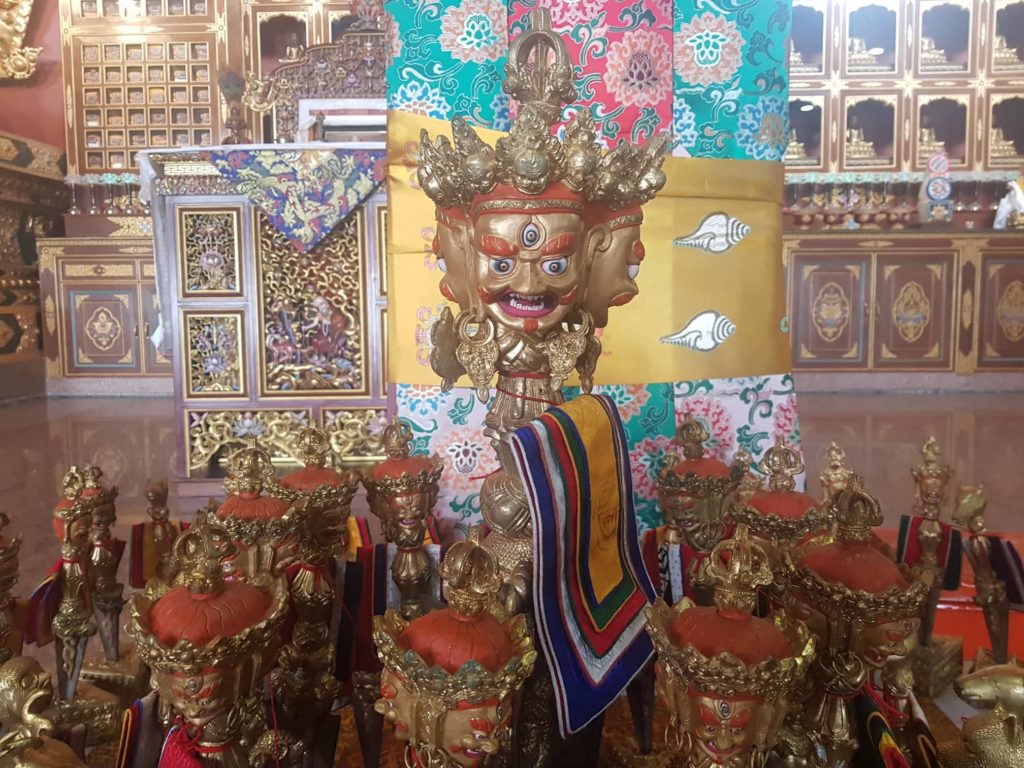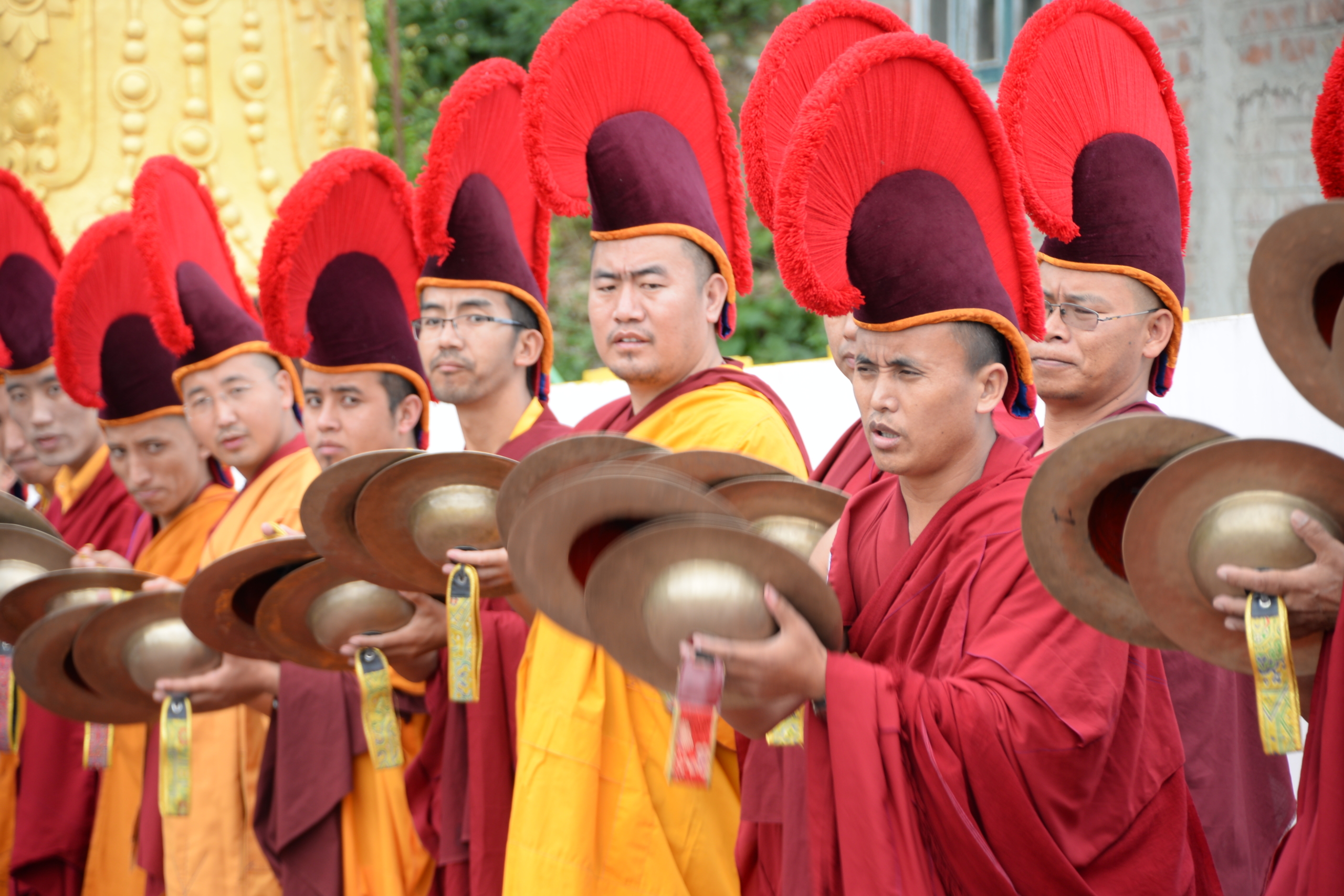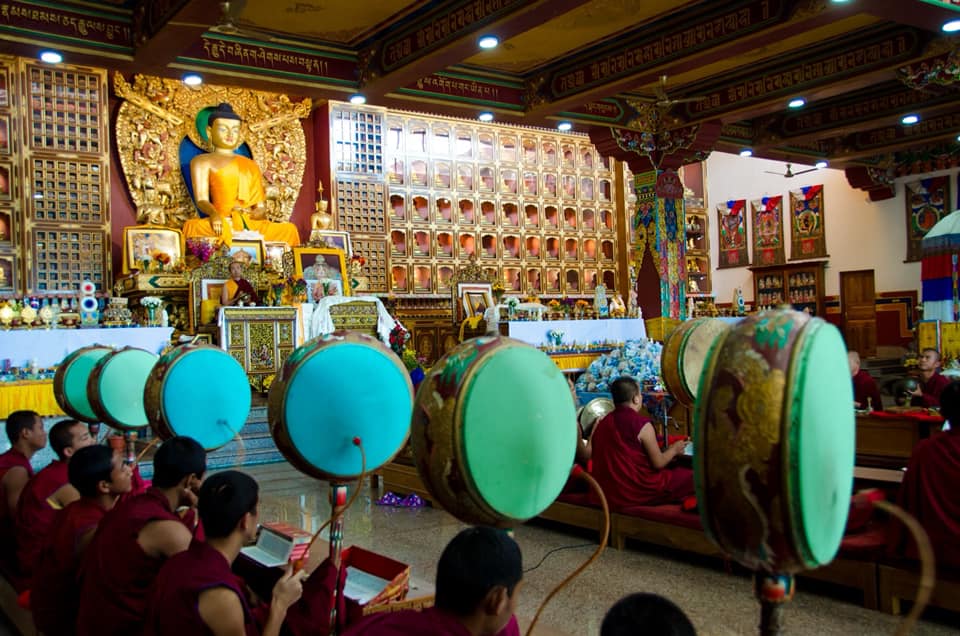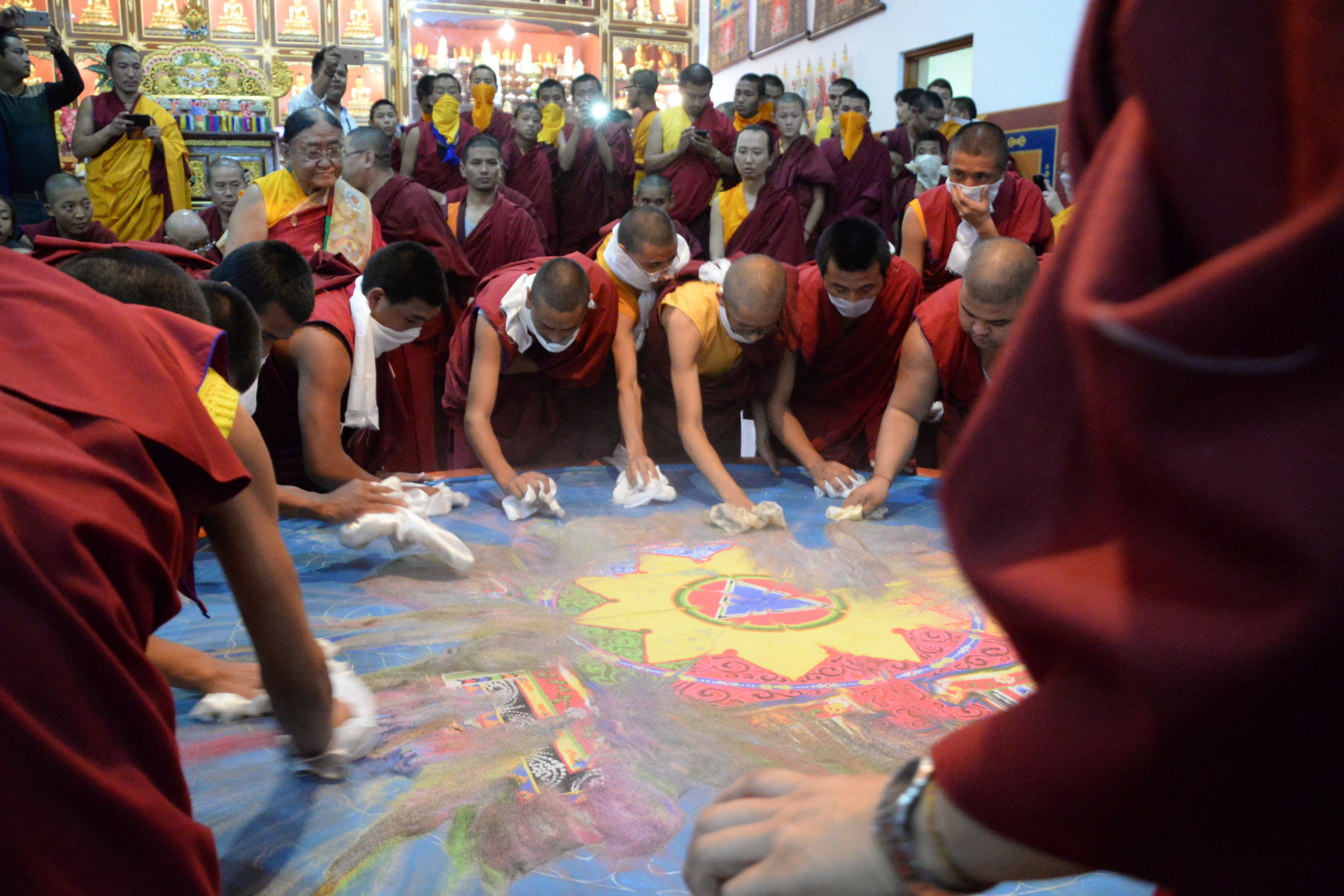The Vajrakilaya teaching cycle is the longest in Sakya history and a major practice of the Khon lineage since the time of Padmasambhava. During 775 C.E., Guru Padmasambhava came to Tibet and Khon Nagendra Raksita received the Vajrakilaya empowerments and teachings directly from him. Khon Nagendra Raksita was also one of the first seven Tibetans to be ordained as Bhikshu (monk). Since then, Vajrakilaya has been the main deity of Khon lineage.
Several generations later, Khon Konchog Gyalpo (1034-1102) started the Sakya Order of Tibetan buddhism and Sakya is one of what is known as the ‘new tradition’ (sarma) and its main tantric deity became Hevajra. Most ancient teachings were concealed during that time, but due to certain indications and signs the Vajrakilaya teaching could not be concealed. Sakya Tradition continues the ancient practice of Vajrakilaya.
Sakya monasteries and Sakya flag are painted in three colours: blue in the centre with the right side white and the left side red. It is believed that these three colours were the original colours of the Palchen Podrang palace (Vajrakilaya temple) and symbolize the three faces of Vajrakilaya.
The Sakya tradition has innumerable rituals, and ceremonies. Among them, Vajrakilaya is a major practice and the most elaborate and longest. It begins with a very elaborate dance to bless the earth and related earth rituals. After that a sand mandala is created, and the vajra master and monks incorporate the sand mandala into the ritual practice everyday, and receive self-empowerment from it. The seventy-five kilaya, (ritual pegs or stakes) that are part of the Vajrakilaya ritual mandala must be made according to exact specifications. The sand mandala is dismantled at the final day of ritual.
During the ritual, the deity Vajrakilaya appears in wrathful form as the manifestation of all the Buddhas’ activity to subdue obstacles. It is believed that by participating in the ritual, all obstacles for the entire year will be cleared away.
The Vajrakilaya ritual is unique because the hereditary lineage of the Khon family and the teaching lineage of the ritual go almost hand-in-hand. This lineage has been unbroken since the time of Guru Padmasambhava and Khon Nagendra Raksita, right up until the present time. Also, through the centuries, the unbroken series of Vajrakilaya lineage holders have all had very high realization.
His Holiness the 41st Sakya Trichen further described why the Vajrakilaya teaching is special: “In 1959, when troubles started in Tibet, every ritual in every monastery was broken…. However, even in the year 1959 itself we managed to perform the Vajrakilaya ritual. Moreover this was not done with the clear intent or special effort to keep it unbroken; it resulted spontaneously from auspicious circumstances….” It is the only ritual that has never been broken, from ancient times until now.
In the year 2015, Kalimong Sakya Monastery performed the Vajrakilaya Ritual for the first time in the presence of His Holiness Sakya Trichen Rinpoche and His Holiness Ratna Vajra Rinpoche. This annual ceremony also serves as an important milestone in the monk’s ritual training where they are examined during the ritual of their mastery of the ritual curriculum.
The Vajrakilaya ritual is truly a wondrous and blessed event. It is inspiring to think of the authenticity of the empowerment and teachings upon which this is based, These blessings have been preserved and transmitted from generation to generation by the Khon lineage for nearly 1,300 years. May all beings receive the blessings of the continuation of the authentic practice lineage of the holy Vajrakilaya ritual.
Source: A Teaching on the Vajrakilaya Puja in the Khon Lineage of the Sakyapa Tradition based on an Interview with His Holiness the Sakya Trichen
